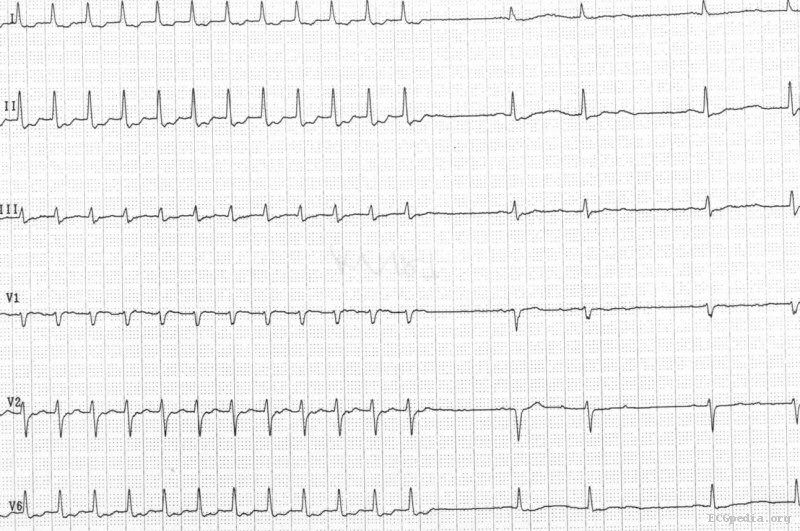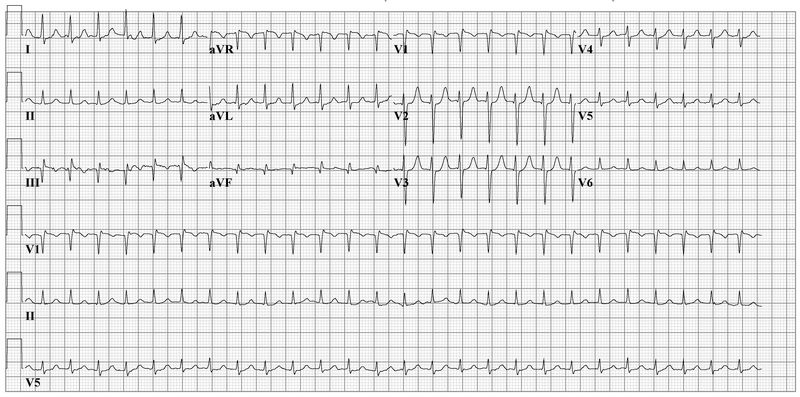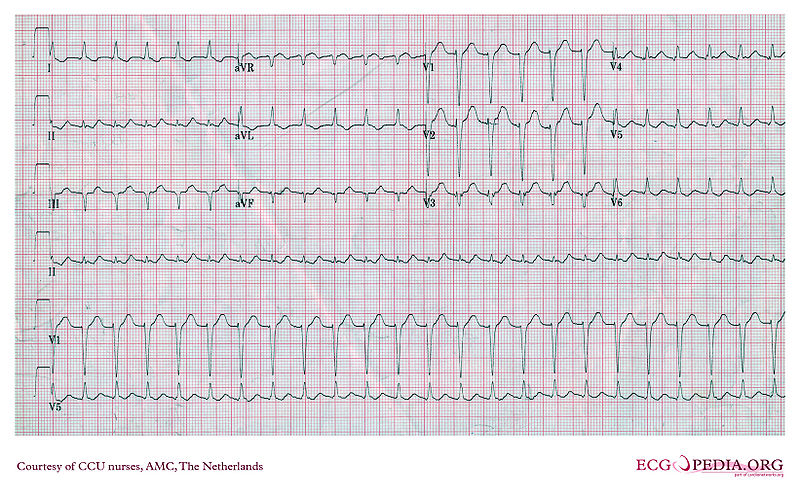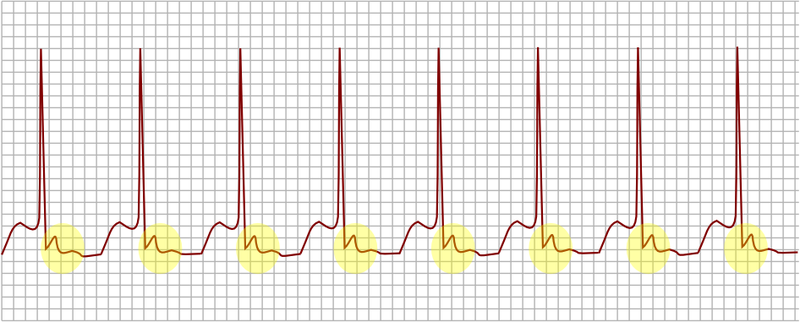AVNRT electrocardiogram
|
AVNRT Microchapters |
|
Diagnosis |
|---|
|
Treatment |
|
Case Studies |
|
AVNRT electrocardiogram On the Web |
|
American Roentgen Ray Society Images of AVNRT electrocardiogram |
|
Risk calculators and risk factors for AVNRT electrocardiogram |
Editor-In-Chief: C. Michael Gibson, M.S., M.D. [1]
Overview
An electrocardiogram performed during the occurrence of symptoms may confirm the diagnosis of AVNRT.
Slow-Fast AVNRT (Common AVNRT)
- This form of AVNRT accounts for 80% to 90% of cases of AVNRT.
- The retrograde P wave that is conducted retrograde up the fast pathway is usually burried within the QRS but less frequently may be observed at the end of the QRS complex as a pseudo r’ wave in lead V1 or an S wave in leads II, III or aVF.
EKG Examples
Shown below is an EKG of AV nodal reentry tachycardia (AVNRT) terminated by adenosine injection. Note that the last complex of the tachycardia has a retrograde P wave. Termination by block in the slow pathway is typical for common type AVNRT.

Copyleft image obtained courtesy of ECGpedia, http://en.ecgpedia.org
Shown below is an EKG demonstrating AV nodal reentry tachycardia (AVNRT).

Copyleft image obtained courtesy of ECGpedia, http://en.ecgpedia.org
Shown below is an EKG showing AV nodal reentry tachycardia (AVNRT).

Copyleft image obtained courtesy of ECGpedia, http://en.ecgpedia.org
Fast-Slow AVNRT (Uncommon AVNRT)
- This form of AVNRT Accounts for 10% of cases of AVNRT
- In this form of AVNRT, the impulse is first conducted antegrade down the Fast AV nodal pathway and is then conducted retrograde up the slow AV nodal pathway.
- In contrast to common AVNRT, a retrograde P wave may be observed after the QRS complex before the T wave
EKG Examples
Shown below is an EKG image of uncommon AVNRT.

Shown below is an EKG image of uncommon AVNRT.

Slow-Slow AVNRT (Atypical AVNRT)
- This form of AVNRT accounts for 1-5% of cases of AVNRT
- In this form of AVNRT, the impulse is first conducted antegrade down the Slow AV nodal pathway and retrograde up the slow left atrial fibres approaching the AV node.
- The p wave may appear just before the QRS complex, and this makes it hard to distinguish the rhythm from sinus tachycardia.
Aberrant Conduction
It is not uncommon for there to be a wide QRS complex due to aberrant conduction due to underlying conduction system disease. This can make it difficult to distinguish AVNRT from VT. The distinguishing features include:
- AVNRT is associated with a QRS complex morphology resembles a typical bundle branch block
- AVNRT is not associated with AV dissociation where there is variable coupling of the p wave and the QRS complex
- AVNRT is associated with Cannon a waves
- AVNRT is not associated with capture beats or fusion beats
- AVNRT may convert with adenosine or vagal maneuvers
An electrophysiologic study may be needed to confirm AVNRT prior to ablation.
Holter Monitor / Event Recorder
If the patient complains of recurrent palpitations and no arrhythmia is present on the resting EKG, then a Holter Monitor or Cardiac Event Monitor should be considered.